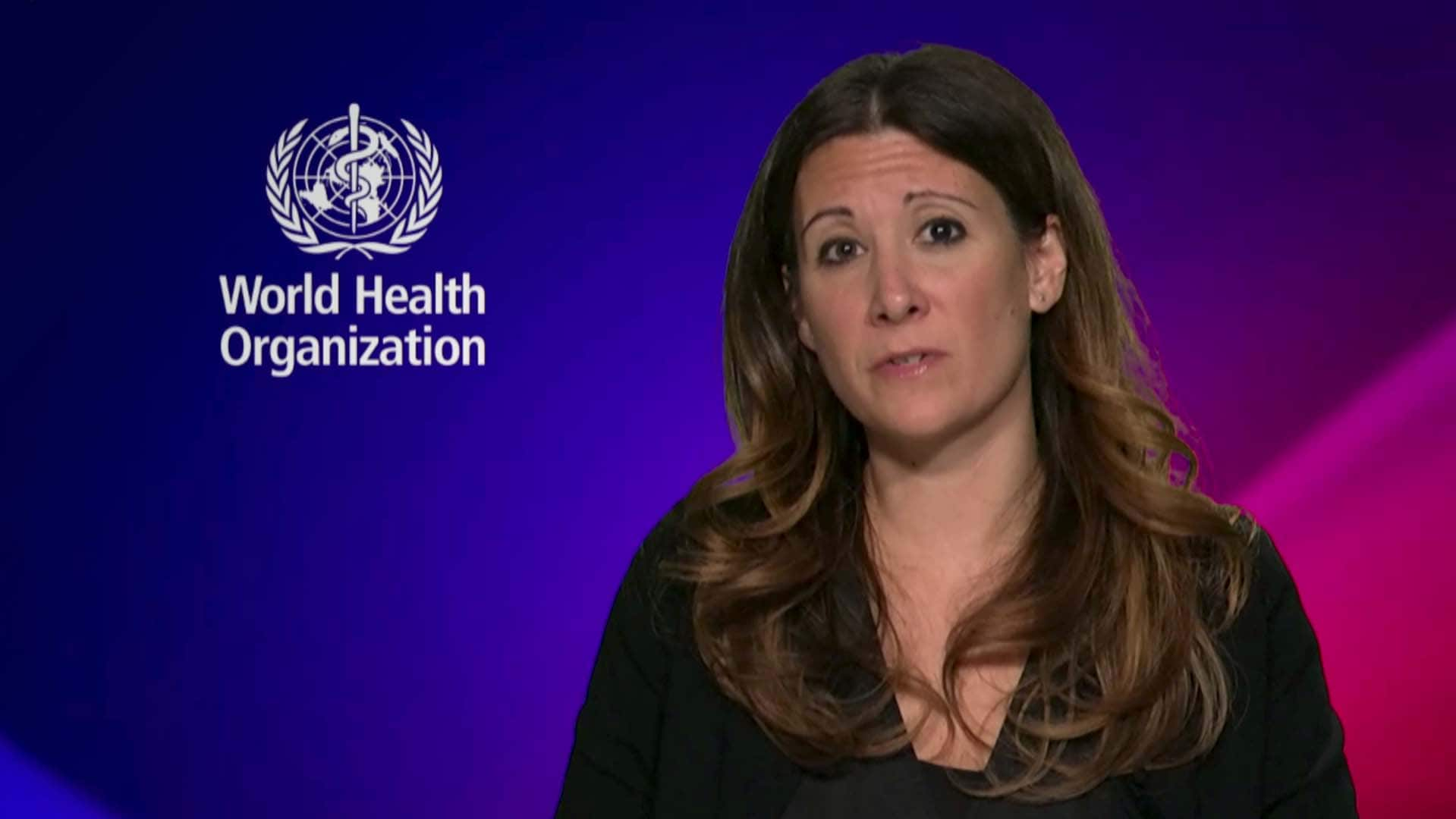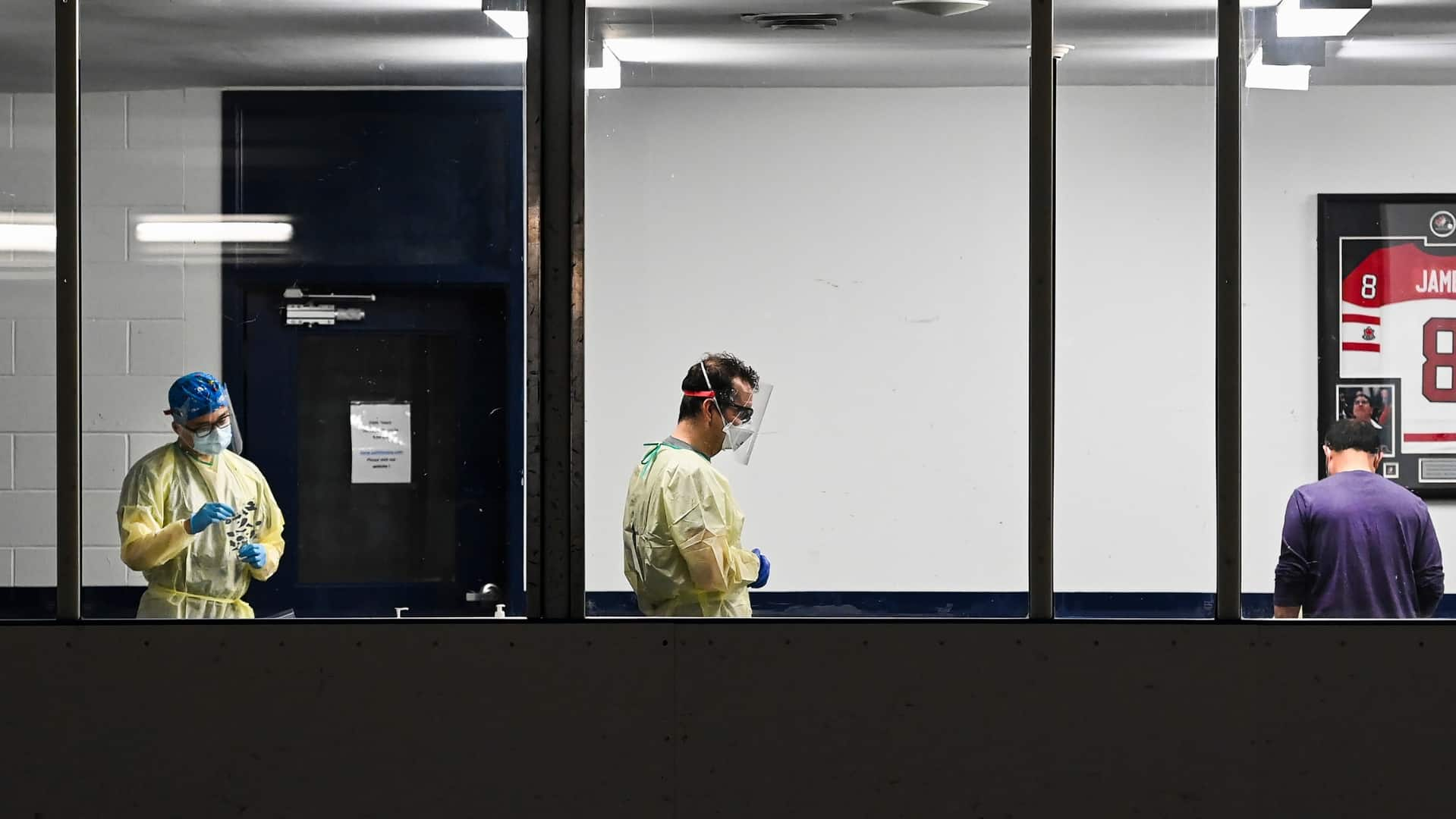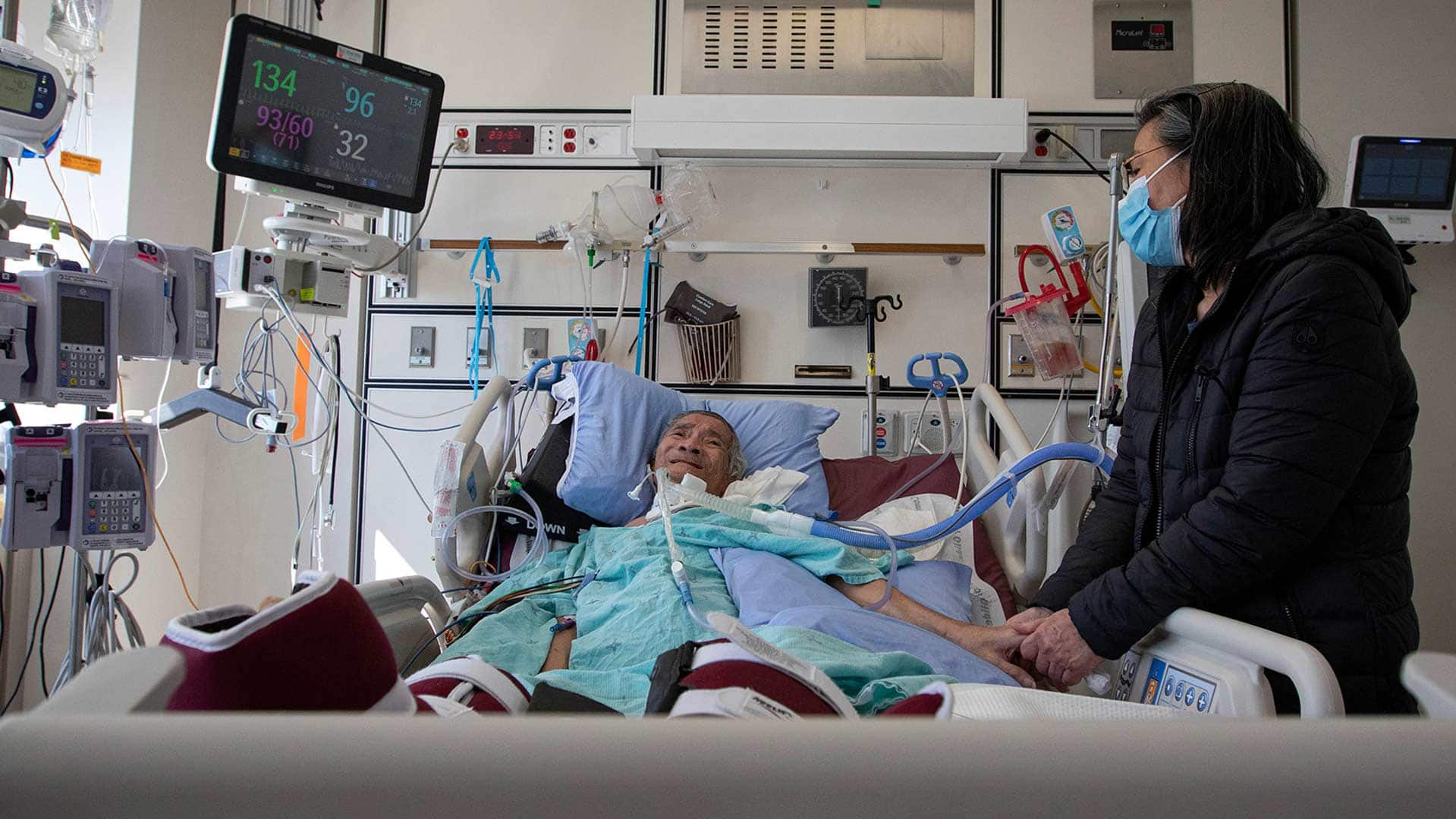The COVID emergency might end after 3 long years — but the virus is still a threat
WHO committee meets Friday to discuss whether the pandemic still represents a global emergency
A microbiologist in Toronto, who famously survived a SARS infection in 2003, McGeer knew the strange, unexplained pneumonia spreading in China could explode into something much, much worse.
She said as much during a provincial meeting during the last week of January that year. "This is going to be awful," she recalled telling officials. "And in particular, long-term care is going to be catastrophic."
Soon after, her son asked how long the crisis would last. McGeer's grim prediction: 18 months.
"And even that was a pretty substantial underestimate," she told CBC News recently.
It's now been more than three years since SARS-CoV-2 began its march around the world, first as a virus totally foreign to humans, and later as an evolving pathogen capable of sneaking past our sharpened immune systems, infecting even those who've built up immunity from prior infections or vaccinations.
On Friday, a World Health Organization (WHO) committee is set to meet to consider whether the COVID-19 pandemic still represents a global public health emergency.
Multiple experts who spoke to CBC News said that regardless of what WHO decides in the days ahead, COVID will remain a threat to our collective health for years to come — for a slate of different reasons — even as governments and the public move on.
"I know this is what happens at the end of pandemics," McGeer said, "but watching it in real time is a bit depressing."
COVID keeps finding new victims
There are reasons to be hopeful about the trajectory of the COVID pandemic, even though this virus has claimed millions of lives.
By now, a majority of Canadians are vaccinated, which largely protects against serious illness. Drugs like Paxlovid are available for higher-risk groups, and critical care physicians have learned how to better treat those who do fall seriously ill.
As of mid-2022, vaccinated and boosted Canadians were three times less likely to be hospitalized — and five times less likely to die — than people who hadn't gotten a single shot, federal figures show.
Data from a B.C. research team also suggests SARS-CoV-2 has infected most of the population at least once, offering many people a blend of protective immunity through both viral exposure and vaccines. But most doesn't mean everyone, McGeer stressed.
COVID still killed hundreds of Canadians each week throughout much of the last year, and even now, the virus keeps finding new victims with grim regularity, she said, including isolated seniors and other high-risk individuals who managed to avoid the virus while taking precautions.
"We have too many older people who are as yet uninfected for it to plateau," said McGeer.
In public remarks earlier this week, WHO director-general Tedros Ghebreyesus said since the beginning of December, the number of weekly worldwide reported deaths from COVID has been increasing, with more than 170,000 reported deaths in just the past eight weeks.
"While I will not pre-empt the advice of the emergency committee," he said, "I remain very concerned by the situation in many countries, and the rising number of deaths."
Seniors are among the groups most vulnerable to serious health outcomes — and death — even if they're vaccinated against COVID. And yet little has been done to protect the most frail living in North American care homes, said Bill Hanage, an associate professor of epidemiology and co-director of the Center for Communicable Disease Dynamics at Harvard T.H. Chan School of Public Health.
"I think that it's kind of crazy that we [hadn't] previously developed ways to robustly rapidly test people who work in nursing homes, to prevent them bringing in respiratory viruses," he said.
Researcher Dr. Donald Vinh, an associate professor in McGill University's department of medicine, said it's also important to recognize that individual risk can change with time.
Aside from basic aging, there's a host of ways that even low-risk individuals can eventually become more vulnerable to COVID. A healthy young woman who gets pregnant would then become higher-risk, Vinh noted. A middle-aged man who gets leukemia or lymphoma or requires an organ transplant — a similar shift.
"We have to remember that the at-risk groups are very fluid, and you could find yourself in that at-risk group," he said.
SARS-CoV-2 keeps evolving
There's also a chance this virus could evolve to become more intrinsically severe, and capable of causing more serious disease — putting a much broader spectrum of the population at risk.
A curveball of that sort could lead to WHO naming a new variant of concern. ("Pi" is expected to come next in the organization's Greek alphabet naming convention, following Omicron.)
So far, that's not how SARS-CoV-2 is mutating. Scientists say the reigning Omicron family of subvariants continues to shapeshift in ways that make this virus more contagious, which allows it to better lock onto our cells, sneak past our frontline defenses, and infect more and more people.
That's countered by growing levels of immunity throughout the global population, said Hanage.
"Unless there is a large amount of evolution on the part of the virus — which can't really be foreseen in any detail — we can expect that to continue," he added. "And so it will become more and more a part of something we live with."
 Long
lines at testing centres, like this one pictured in Toronto on Sept.
18, 2020, mirrored a spike in cases of COVID-19 during the first year of
the pandemic. (Evan Mitsui/CBC)
Long
lines at testing centres, like this one pictured in Toronto on Sept.
18, 2020, mirrored a spike in cases of COVID-19 during the first year of
the pandemic. (Evan Mitsui/CBC)
Scientists are watching global virus evolution closely, in case SARS-CoV-2 mutates in a different direction, particularly given the surge of cases among China's 1.4 billion-population since the country abandoned its strict zero-COVID policies. Yet, so far, there are no early signals of a new variant, according to data released by China's government.
"Every day that goes by, the likelihood that we will get Pi, I think, declines," McGeer said.
But, as the world witnessed when Omicron first burst on the scene, it's a numbers game. The virus doesn't have to evolve to become more deadly to wreak havoc on a population level — it just has to be able to spread to as many people as possible.
Vaccines' ability to prevent transmission has 'declined'
The world is now facing the most highly-transmissible variant yet, and while vaccines still help prevent severe disease and death, their ability to protect people from infection and transmission has "declined dramatically," said researcher Akiko Iwasaki, a Sterling Professor of immunobiology and molecular, cellular, and developmental biology at Yale University.
That's giving the virus ongoing infection opportunities for the foreseeable future.
While updated bivalent mRNA vaccines are available to target both Omicron subvariants and earlier strains, by-and-large, COVID vaccines are increasingly mismatched to circulating variants, said McMaster University immunologist and researcher Matthew Miller.
"We still need to generate better vaccines — vaccines that are longer-lasting and broader," he added. "And what the right strategy to do that will be, is still a question." (Miller's research team is working on an inhaled coronavirus vaccine, which recently entered phase two clinical trials.)
Vinh also worries that an ever-evolving virus means we'll be playing catch-up in terms of effective treatments and medications as well.
"In fact, some of the medications that we've used over the last three years have become essentially obsolete because the virus has continuously changed," he said.
 While
updated bivalent mRNA vaccines are available to target both Omicron
subvariants and earlier strains, by-and-large, COVID vaccines are
increasingly mismatched to circulating variants, said McMaster
University immunologist and researcher Matthew Miller. (Craig Chivers/CBC)
While
updated bivalent mRNA vaccines are available to target both Omicron
subvariants and earlier strains, by-and-large, COVID vaccines are
increasingly mismatched to circulating variants, said McMaster
University immunologist and researcher Matthew Miller. (Craig Chivers/CBC)
COVID isn't yet seasonal or predictable
Another challenge with COVID going forward is that the virus is unpredictable.
It echoes an old medical adage about influenza: If you've seen one flu season, you've seen one flu season. (Since no two are exactly the same.)
That uncertainty is far more pronounced with COVID. With three years of data behind us, there's still no clear seasonal winter spike or a summer lull, but rather dramatic peaks and valleys in the early years, followed by the first massive Omicron surge, and rolling waves of infections ever since.
McGeer said she's hopeful this virus will eventually settle into a more predictable pattern, though it's not happening as quickly as anyone would like.
"But if it decides not to be seasonal," she said, "that's just going to be a little bit harder."
Long COVID remains an enigma
Should WHO deem the global emergency over while COVID is still circulating at high levels, multiple medical experts expressed concern that it could disincentivize governments from funding research into post-COVID condition, the formal term for what's colloquially known as long COVID.
"Postacute infectious syndrome — which now includes long COVID — has been around for a very long time but hasn't been seriously studied, mostly because of lack of funding and a lack of acknowledgement," said Iwasaki.
"People are very tired of thinking about COVID, about having to wear masks or get another booster... but at the same time, from where I stand, I'm seeing so many millions of people suffering from long COVID with no good diagnosis or therapy," Iwasaki continued.
"I hope whatever declaration there is, it's not going to diminish the research that's direly needed."
Inside some of Canada's hardest-hit hospitals in the 3rd wave of COVID-19
COVID won't be the last pandemic
While COVID's toll will be felt for years to come, the dynamics of this pandemic have changed dramatically since the dark days of 2020, or the devastating Omicron wave of early 2022.
For much of that stretch, hospitals and health-care systems were overwhelmed, said Dr. Isaac Bogoch, an infectious diseases specialist with the University Health Network in Toronto.
"We were admitting adults into pediatric intensive care units. We had tents set up outside of hospitals to care for patients. We were bringing in personnel from other provinces to help out. There were few if any ICU beds left in [Ontario]. We were shoving people hundreds of kilometers away for an ICU bed," Bogoch recalled. "It was horrendous."
There were devastating death tolls among long-term care residents in Canada, but even younger, healthier individuals were also acquiring serious COVID infections before the development of therapeutics and vaccines, he said.
The situation has since shifted. But has the world learned any lessons from COVID's darkest days — and the years of challenges still to come?
"I hope [WHO officials] acknowledge that even though it might not meet the criteria for being a public health emergency of international concern, that doesn't mean that the threat or the risk is over," Bogoch said.
 A person wears a mask emblazoned with 'COVID-19' during the first year of the pandemic. (Ben Nelms/CBC)
A person wears a mask emblazoned with 'COVID-19' during the first year of the pandemic. (Ben Nelms/CBC)
McGeer emphasized the critical nature of ongoing viral surveillance and sequencing, along with pandemic preparedness efforts.
But she said given the turnover in governments and public health agencies, the world's "institutional memory is probably not going to make it to the next pandemic."
And that's a problem, since it's not if another global health threat will hit — but when.
"Pandemics are a certainty," said McGeer. "The only question is, what they'll be, and how bad they'll be."




No comments:
Post a Comment